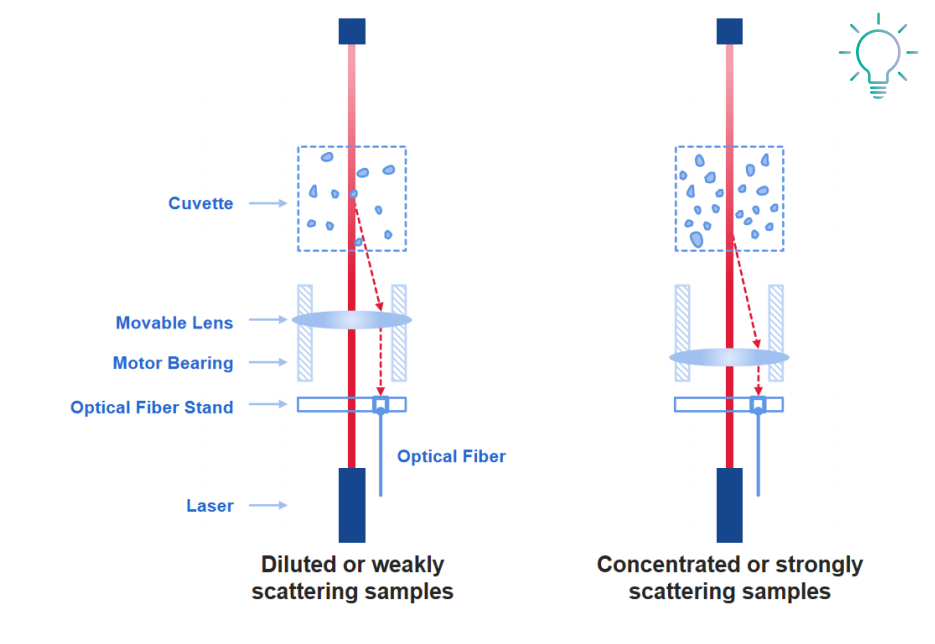What is DLS backscattering technique?
2023-05-22WIKI
The traditional dynamic light scattering analysis used a 90° detector which received scattered light signals emanating from diluted samples. The emphasis was on dilution as more concentrated samples would have strong particle interactions as well as create multiple scattering rendering the technique unusable. Therefore, in most applications, laborious sample preparation before analysis was necessary, resulting in inconvenient operation and potential destruction of colloidal stability.
A DLS backscattering technique was made available in recent years that can detect scattered signals at a large angle, usually between 160° and 175°.
The DLS backscattering technology enables intelligent adjustment for the optimal detection position. By moving the lens, the detection point can be set from the center to the cuvette wall, allowing the detection of different types and concentrations of samples to a great extent.
The advantages of DLS backscattering technology over the traditional 90° setup include higher detection sensitivity for samples with very low concentrations.
Besides, it is now possible to make intelligent adjustments of optical elements to avoid multiple scattering and, therefore, the capability of analyzing concentrated samples, in addition to limiting the interference caused by dust.





